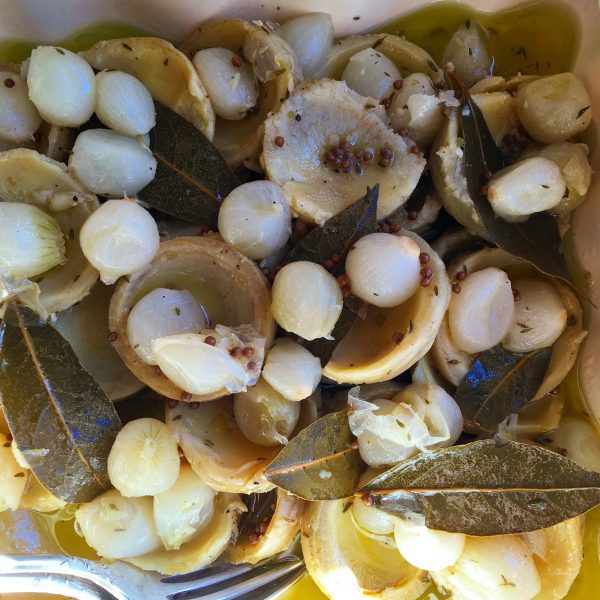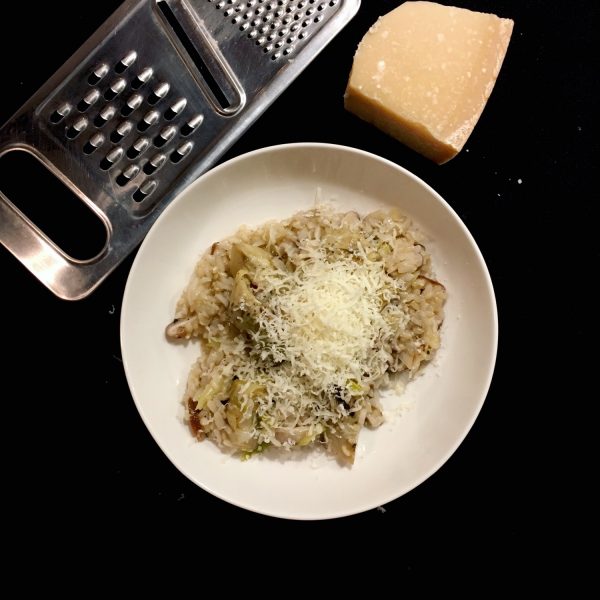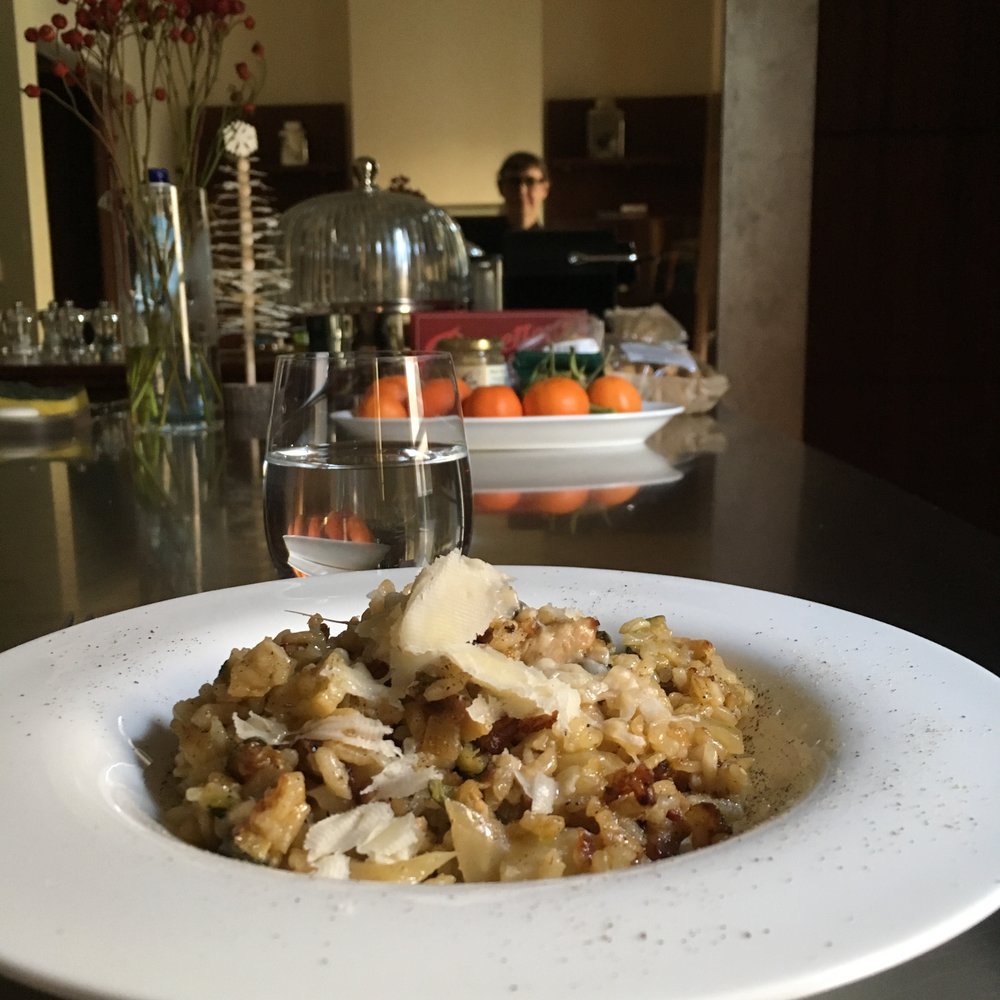One of the food I miss much in Japan as you already know, is artichoke. For some reason it is something that reminds me my childhood. From the simply boiled large ones that one of my grand mother would prepare to eat one leave after the other dipped in mustard vinaigrette, or the tiny purple artichokes barigoule of my mother or a recipe from my other grand mother “greek style artichokes” I love them all. When we lived in Paris I used to prepare some quite often and the greek style artichokes were always a good pick for casual dinners. When we go back home, my mother always prepare artichokes for me, usually for the very first day when we arrive, since they can be made in advance, and they are very good warm or cold it means lunch or dinner is always ready for us to eat anytime. Yesterday for a family lunch she made artichokes greek style. I thought I’d share that recipe today.
Artichoke greek style (for 2)
– 10 large artichokes (in worst case artichokes heart preserves)
– 10 bell onions
– 1 tbs of coriander seeds
– 2 leaves of laurel
– a branch of thyme
– 3 tbs of olive oil
– 3tbs of white wine (optional)
Boil the artichokes and extract the hearts.
Clean the bell onion by peeling one layer.
In a large pan put the olive oil, the wine, the artichokes hearts, the onions, the coriander, thyme, laurel. Add just a bit of salt and pepper, cover with water and cook at low heat under cover for 40min.
Perfect eaten with fresh rustic bread to enjoy all the delicious juice.








